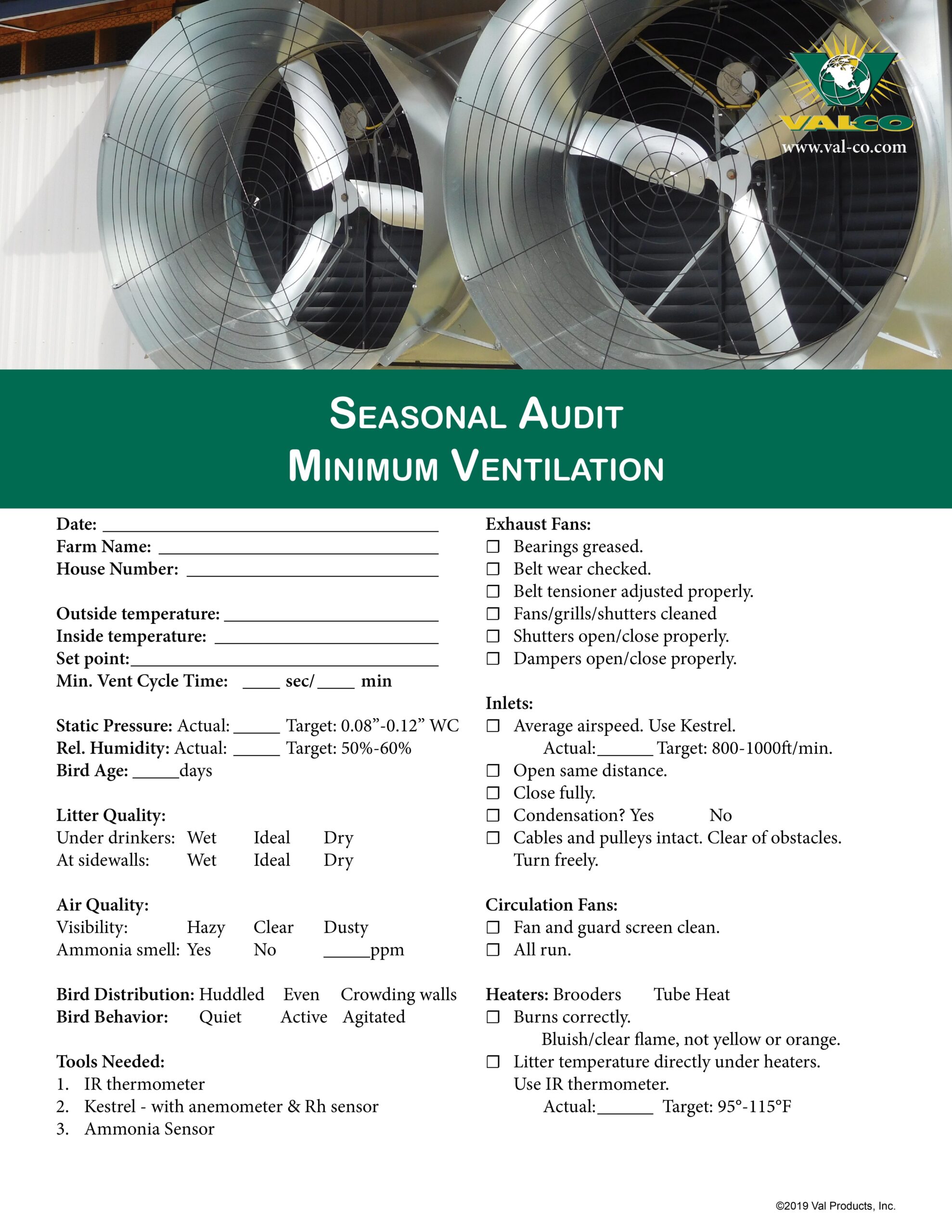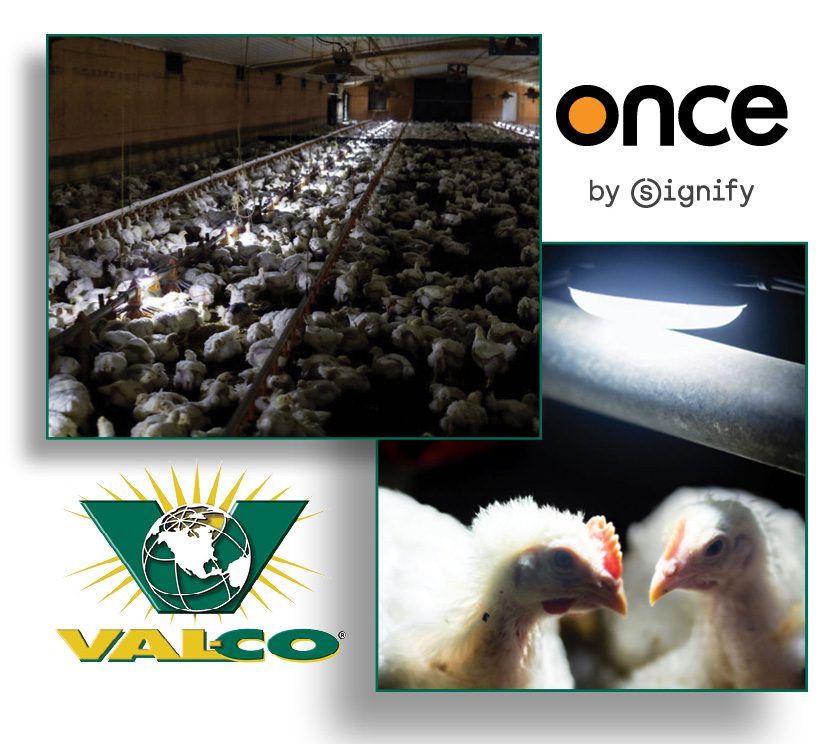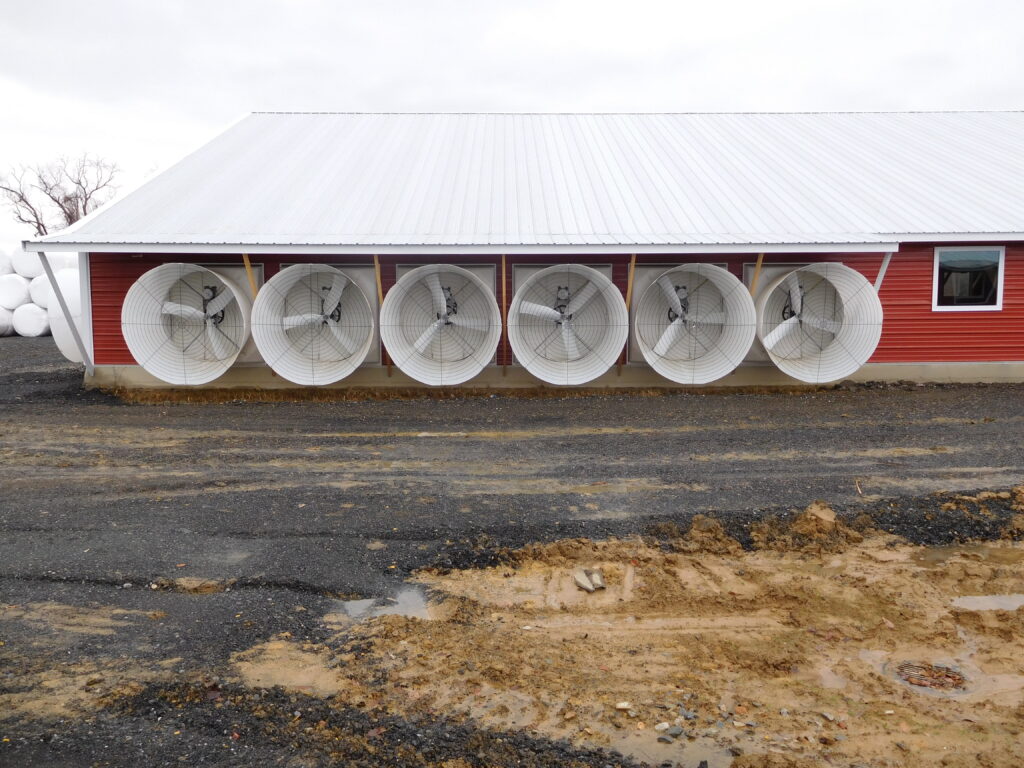During winter we use minimum ventilation to balance fresh air intake with heat conservation. House tightness should be the first thing on your winter prep checklist. Heat lost through building air leaks causes the heaters to run excessively and waste fuel. Air leaks can also cause cold air drafts that can chill livestock, create cold spots on the floor, and result in poor floor conditions.
Test House Tightness:
- Close the building up and turn on 1 cfm per square foot of floor space. For example: 40’ x 500’ building has 20,000 sq. ft. of floor space, so use 20,000 cfm of fan power → (1) 48” fan or (2) 36” fans.
- Measure pressure with a differential pressure gauge. The high-pressure end goes outside the house (usually though an inlet at the front of the house) and the low-pressure end stays inside the house. Hold the gauge firmly against the wall in a level position for the most accurate reading.
- Should get a minimum of 0.10” water column pressure, but 0.20” is ideal.
Litter Quality:
Litter should be dry and friable. Keeping floors dry can be a challenge during the winter due to the educed ventilation rates. Using circulation fans to keep air moving slowly over the litter will help to keep moisture levels down.
Air Quality:
Ammonia, carbon monoxide, and carbon dioxide can surpass safe levels rapidly if not enough air is moved through the house. Fans, heaters, and brooders should all work in conjunction to provide the right amount of fresh air to the building, properly warm it up, and then distribute it about the bird space.
Use this Minimum Ventilation Audit to inventory your winter ventilation.




